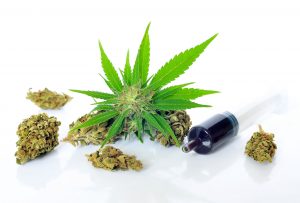Question: Can cannabis help Parkinson’s disease?
Answer:
Parkinson’s disease is a devastating neurodegenerative condition and the second most common type of deterioration of the brain and nervous system worldwide. Nearly 60,000 Americans are diagnosed with Parkinson’s disease each year. 1,000,000 Americans and more than 10 million people worldwide are living with this disease. Medical cannabis is a promising treatment option.
What is Parkinson's?
Parkinson’s is a chronic and progressive movement disorder where symptoms continue to worsen over time. It has no cure. It is a neurodegenerative disease that wreaks havoc on the brain, which in turn interferes with the bodies fine motor skills. The brain’s neurons, or nerve cells, are what create dopamine, and the deterioration of this process is the cause of Parkinson’s disease.
Typically, an individual with Parkinson’s is unaware of their illness until the progressive cell death has already led to impairment in significant symptoms. The signs of Parkinson’s are hand tremors, muscle stiffness, memory loss, confusion, uncontrollable twitching or shaking, slowed movement, postural changes, changes in facial expressions, and changes in handwriting.
In Parkinson’s patients, the dopamine chemical production is slowed down, and over time it can be completely diminished. Some of the first symptoms of early Parkinson’s disease are impaired sense of smell, constipation, and sleep disorders. These early signs are found in the medulla and that enteric region of the brain. Some patients will have diminished voices, develop rigid muscles, and show little to no expression on their faces within the middle stages of the disease.
As the disease progresses, it eventually reaches the substantia nigra region of the brain, which assists in controlling body movements. Once this stage is reached, patients have a difficult time controlling their body, and may develop tremors of the hands and arms. They begin to have progressive rigidity and stiffness and pastoral instability with impaired balance and coordination.
All of our traditional Parkinson’s medicines list some type of movement disorder as a side effect. Carbidopa/Levodopa (Sinemet) can cause worsening tremors. Apomorphine (Apokyn) can cause twitching. Benztropine (Cogentin) can cause uncontrolled movements of your lips , eyes, tongue, face, arms, or legs. Because of the above it is very difficult to surmise a worsening tremor versus a potential medication side effect.

Medical cannabis may benefit Parkinson’s patients
Within our endocannabinoid system, CB1 and CB2 receptors are embedded within the central and peripheral nervous systems. Studies show that the neuroprotective properties of medical cannabis have positive effects on both nonmotor and motor functions in patients with Parkinson’s disease. Because medical cannabis is rich in antioxidants and anti-inflammatory properties, it also staves off growing symptoms related to the disease like psychosis, speech, writing, walking, and many other degenerative factors.
I have found that each patient is different and their response to cannabis as treatment is also very individualized. I have had patients with significant relief of tremors and others with no relief. I have found that many patients have relief of associated mood disorders like depression and anxiety while others have not. Understanding that Parkinson’s patients are more likely to develop a Lewis Body Dementia diagnosis, when compared to the general population, I focus in teach about neuroprotective effects. I often think of the commercial, “Your brain on drugs,” with the fried egg and shake my head because in fact cannabis is the potential antidote to dying brain cells. Because it is difficult to measure the insidious changes both positive and negative, I try to shift my patients’ attention to functional outcomes.
It is easy to be excited about a reduction in tremors because it is so obvious to our patients but a functional improvement needs to be considered a victory as well. Have you noticed any improvement in your walking? Are you able to button your shirt? Have you been able to go out with your family? Although these questions are rudimentary, they are the basis for improvement. Positive answers show positive improvements. Small successes, no matter how small, must be celebrated because it is proof that your body is responding to treatment and if you’re responding then I believe we are slowly furthering progression.
It is important to speak to your physician about your ultimate goals and if they have had success in their patient populations. Regardless of your goals I am confident that cannabis is a viable treatment. In my patient population I ask that each patient give my oral regimen at least 6 to 8 weeks before they tell me of their success or failure. I recommend to start journaling after my first visit so you can give objective data which can be tracked. I have found that many patients might see minimal improvement, regarding their goals, but family might see other benefits less conspicuous to a patient trying for a tremor free life.
So doc, what can I do now before I see a physician certified in medical cannabis?
Cannabis is only a tool for Parkinson’s patients. I recommend a total health evaluation by a functional or integrative physician. I feel that each patient must be an active participant in his or her care period I believe patient and doctor or a team. Each must do some work in search of success. Structural exams in treatment by D.O. or D.C. can aid in restoring structure and function thereby reducing pain and increasing function. Exercise limits the alteration in dopaminergic neurons in the substantia nigra and increases oxygen supply to the brain. A diet of organic vegetables with healthy fats will increase your intake of omega 3, 6, and 9, homocysteine, CoQ10, and B vitamins. All are proven to decrease inflammation and oxidative stress. Yeah, let’s not forget a glass of red wine because of resveratrol and its neuroprotective effects.
Don’t forget! Proper nutrition, SAY NO to high fructose corn syrup, SAY YES to exercise. Try to live toxin free. Get plenty of sleep. Reduce stress and strengthen interpersonal relationships. These are all part of healthy living.





